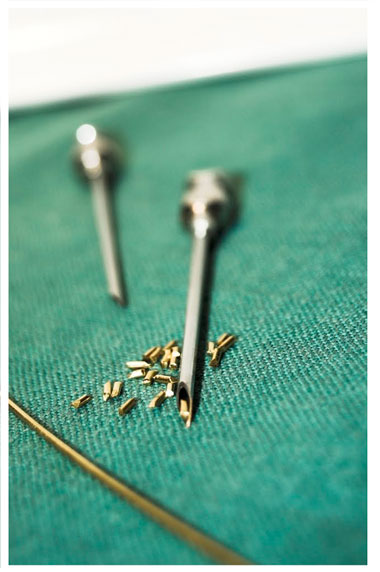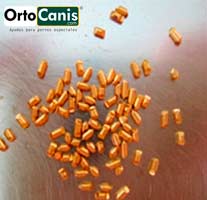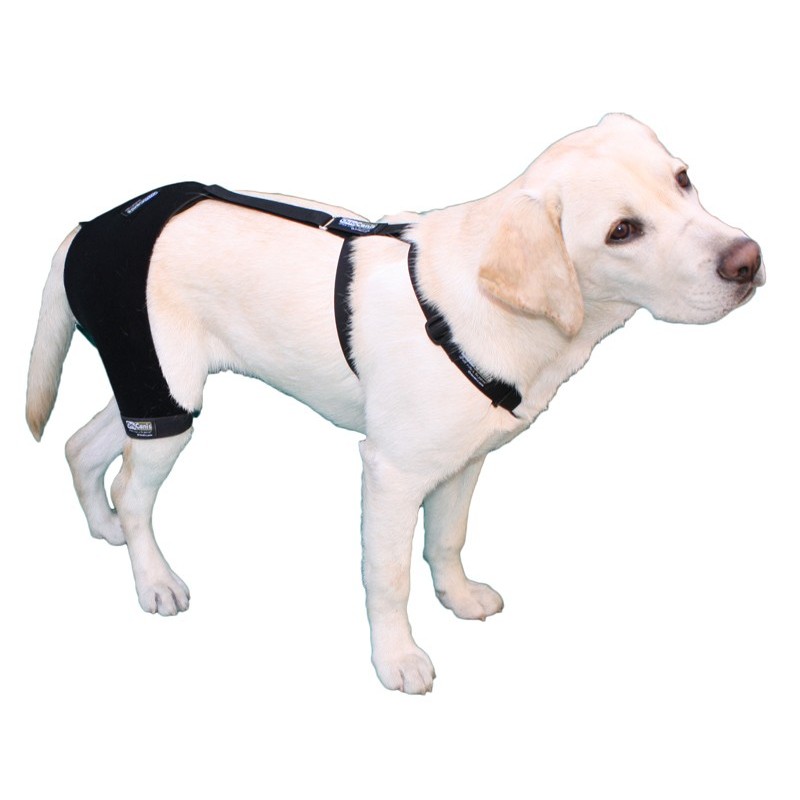Gold implants can help with our dog’s osteoarthritis problems

Using gold implants to correct joint pain problems is a technique that was introduced for the first time in the 70s in the United States by Dr. Grady Young and Dr. Terry Durkes. Initially the implants were used only to treat hip dysplasia and epileptic attacks. Today, they are also used to treat many other disorders, mainly affecting the joints, such as osteoarthritis, certain types of paralysis, intervertebral disc disease, fractures that do not consolidate… as well as for treating urinary incontinence, asthma, allergic dermatitis, licking granulomas or fecal incontinence, among others.
This technique is based on acupuncture, that is, traditional Chinese medicine, and consists of the application of small pieces of 24 karat gold in areas close to the pain points, permitting a continuous stimulation of the region. While traditional acupuncture inserts needles that act for a period of 20-30 minutes, the gold implants, once inserted, are left in the body, making it possible for the effect to take place long-term.
The mechanism by which these implants work has been supported by various scientific publications. Scientific literature primarily indicates that its action can be explained by the constant stimulation of the acupuncture points. On the other hand, the mechanism by which the work is as following: When a pain point exists in a joint, the pH is increased (alkalosis), which then causes an increase of negative charges, this aggravating even more the joint pain. The gold implants neutralize this effect, as they are positive charges, thus achieving a significant improvement by reducing both the pain and inflammation.
The main therapeutic indication of the gold implants is for the treatment of painful joints. Today many dogs suffer from joint problems and osteoarthritis. We know about many treatments, ranging from surgical to pharmacological. Without a doubt, all can be of a big help, despite the surgical solution often entailing a difficult postoperative period, or not always being feasible. With regards to pharmaceuticals, these are usually temporary as they relieve pain but have serious side effects. For this reason, the natural anti-inflammatories and chondroprotectors are often a good option. In this context, the gold implants are relatively new alternative. Together with other aids such as joint protectors, the gold implants are a good way to deal with osteoarthritis problems in our pets when we cannot carry out a surgical solution, or when it simply is contraindicated. Regarding the placement of the implants, our dog should first undergo a full clinical examination in order to establish the diagnosis. The implants will be place when the animal is under deep sedation. Once they are placed, no postoperative treatment is required. It is however recommended that the amount of exercise is limited for two weeks.
A study carried out by the Norwegian School of Veterinary Sciences (T. Jaeger, 2007)*1 of 78 dogs with hip dysplasia that presented pain and loss of joint function due to the osteoarthritis created by the dysplasia in the joint, the dogs were divided into two groups. In one of the groups the gold implants were inserted while in the other was a control group that didn’t have them implanted. At the end of six months both groups were evaluated and the results found that the dogs with the implants had less pain and had improved the functionality of the joint, achieving better mobility. Nevertheless, as explained by Lollie Campbell*2, these implants do not fix dysplasia and even show a greater degree of calcification around the hip. Nevertheless, they improve the quality of life by reducing the pain, a fact that is made possible due to the inflammatory response that is generated around the implants. Furthermore, this technique has few serious long-term side effects. The main risk occurs a few days after placing the implants, and includes pain and limping. During the placement, the main risk is of spillage of the synovial liquid or blood from the insertion point. However, complications or side effects are very few and it is a very safe and easy method to carry out. Together with the joint protectors or wheelchairs, it is a measure that we should consider to alleviate osteoarthritis and joint pain in our dogs.
*1 Gry T. Jaeger, Stig Larsen, Nils Soli and Lars Moe. “Two years follow-up study of the pain-relieving effect of gold bead implantation in dogs with hip-joint arthritis. 2007. Acta Veterinaria Scandinavica. 49:9
*2Lollie Campbell. Los implantes de oro mejoran el dolor en perros con displasia de cadera. Argos 01/07/2009.
Clara Castells Urgell
Ortocanis Veterinarian



